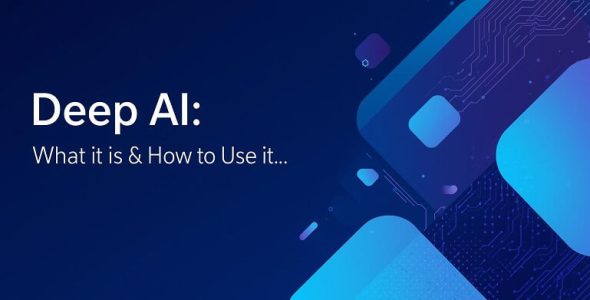Supervised vs Unsupervised vs Reinforcement
When we talk about the data generation at the global level, the amount is exceptionally vast. This data is produced not only by human activities, but also by various devices such as smartphones, computers, etc. A programmer will determine the most suitable approach based on the nature of the data and the underlying objectives to train the algorithm. Also, ML lets you derive insights from data and make predictions regarding new information. However, ML has vast options, with various types of algorithms. This post is here to give you an introduction as well as the difference between them: Supervised vs Unsupervised vs Reinforcement learning.
Supervised Learning
Supervised learning is a subcategory of Machine Learning where an algorithm learns to map input data to a specific output based on example input-output pairs. Usually, you will require labeled input and output data to train the model in this method. Then it makes predictions by learning from the provided dataset. The training data acts as a supervisor or teacher, directing the algorithm to understand the hidden patterns and relationships between features and their corresponding labels.
Types of Supervised Learning Problems
It is mostly used to handle 2 types of problems- Regression and Classification problems.
Regression problems
It is used when the output variable is a continuous value. Its perfect examples are predicting sales figures, house prices, and temperature. This algorithm calculates or predicts an outcome based on previous examples.
Classification problems
A classification problem is used when the output variable is categorical. It helps to predict a discrete value, meaning it falls into a discrete set of categories. To understand it, you assume there is input data that can be categorised as a member of a class or group. For instance, you can categorise a data set of messages or people as spam or not spam and disease or no disease, respectively.
Unsupervised Learning
Unsupervised learning is also a type of ML and is said to be a reversal of Supervised Learning. It uses unlabeled data to find hidden patterns, structures, and relationships within the data. All of this is done without prior guidance or explicit instructions. Algorithms in unsupervised learning identify these inherent structures through clustering or reducing the complexity of data. It can also be described as self-organized learning that looks for hidden features in the given data or clusters it in a way that makes sense. It is commonly used in customer segmentation, recommendation engines, and anomaly and feature detection.
What Unsupervised Learning Algorithms Do
Clustering
Algorithms group similar data points into clusters for easy organization of large datasets. For example, identify distinct segments of customers from a large group.
Dimensionality Reduction
This algorithm reduces the number of features in a dataset while keeping important information. This way, it simplifies complex data and improves understanding.
Anomaly and Feature Detection
Unsupervised learning can detect outliers or unusual patterns in data that deviate from the norm. It can also find important features within the data that are useful for categorization or further analysis.
Reinforcement learning (RL)
It utilizes an agent that discovers optimal behaviors by interacting with an environment through the trial-and-error method. Then it receives positive or negative rewards for its actions to maximize long-term outcomes. Unlike supervised learning, RL does not require a labeled dataset but instead uses a feedback-driven process to find the best strategies for a given task. RL can be used in various complex domains like Robotics, Virtual Assistants, Gaming, Self-Driving Cars, and AI search engines such as Genspark AI, etc.
RL includes components such as
Agent: The learning entity
Environment: The world or system with which the agent interacts
State: The current situation the agent receives from the environment
Actions: Decisions that the agent can take in the environment
Reward: A signal from the environment that indicates the taken action was good or bad
Policy: The agent’s strategy for choosing which action to take in a given state to maximize its total reward
In RL, the agent observes its current state within the environment and then takes an action based on its policy. Based on this action, the environment gives the agent a new state and a reward. Then the agent uses this feedback to update its policy for better rewards over time.
Supervised vs Unsupervised vs Reinforcement Learning: Key Differences
- As you can guess from the name of Supervised Learning, it is highly supervised, and Unsupervised Learning is not supervised. As for Reinforcement Learning, it is less supervised and mostly depends on the agent in finding optimal output.
- Supervised Learning forecasts the result based on a classification type. While Unsupervised Learning finds underlying patterns, and RL uses an agent, environment, and a reward system to produce optimal results.
- Supervised Learning encloses Regression and Classification problems. In contrast, Unsupervised Learning addresses challenges such as Clustering, Dimensionality Reduction, and Associative Rule Mining. RL, on the other hand, is used in more complex domains, such as Deep Learning, Robotics, and Virtual Assistants.
- In Supervised Learning, you work with labeled data, where the output data patterns are known to the system. In contrast, Unsupervised Learning involves unlabeled data, wherein the output is derived from a collection of perceptions. Reinforcement Learning functions through an agent that interacts with the environment in a series of discrete steps.
- In Supervised Learning, the process maps labeled data to known outputs. Conversely, Unsupervised Learning seeks to identify patterns and predict outcomes. Additionally, Reinforcement Learning employs a trial-and-error methodology.
- The input data in Supervised Learning consists of labeled information, whereas Unsupervised Learning utilizes unlabeled data. In the context of Reinforcement Learning, the data is not predefined.
Supervised vs Unsupervised vs Reinforcement Learning: Comparison Table
| Criteria | Supervised Learning | Unsupervised Learning | Reinforcement Learning |
| Definition | Labelled data is used for learning | Unlabelled data is used for Learning | Learns by interacting with the environment |
| Type of Problems | Regression and Classification Problems | Association and Clustering Problems | Exploration or Exploitation Problems |
| Data Type | Labelled Data | Unlabelled Data | Experiential or sequential data gathered by the agent |
| Algorithms | KNN, Linear Regression, Logistic Regression, SVM, etc. | Apriori, K – Means, C – Means | Q – Learning, SARSA |
| Objective | Predict outcomes | Find underlying patterns | Learn by a series of actions |
| Supervision | highly supervised | Not supervised | Less or not supervised |
| Use Cases | Predict Sales, Risk Evaluate | Recommendation System, Anomaly and Feature Detection | Robotics, Virtual Assistants, Self-Driving Cars |
Conclusion:
With this, we have now reached the end of our topic, Supervised vs unsupervised vs reinforcement learning. We have seen their definitions, problems, and their roles in ML. Hope you get the strengths of each type and learned how to employ them to tackle real-life problems to make optimal decisions for sorting and grouping data.

 My Account
My Account 

